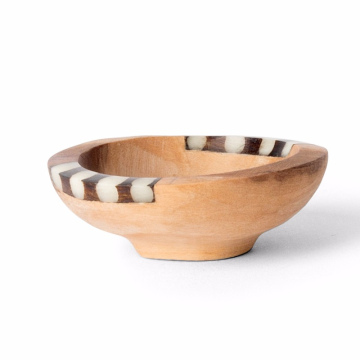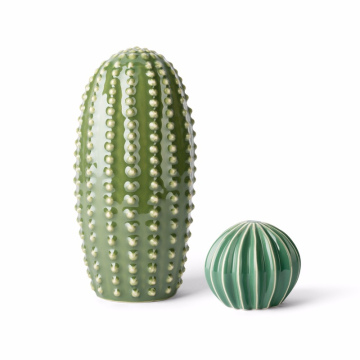Introduction to Spain's Wildflower Diversity
Spain is renowned for its striking landscapes that host an impressive variety of wildflowers throughout the year. The country's diverse climatic zones and geographical features are pivotal in creating habitats suitable for a multitude of floral species. From the towering peaks of the Pyrenees to the sun-drenched coasts of the Mediterranean, Spain's terrain creates microclimates that foster unique plant life, contributing to an extensive wildflower diversity.
The geographical composition of Spain is vast, encompassing mountain ranges, expansive plains, and coastal regions. These natural features facilitate a range of climates, including continental, Mediterranean, and oceanic weather patterns. As a result, numerous wildflower species have adapted to these conditions, thriving in their specific environments and contributing to the country's rich biodiversity. In the mountainous regions, alpine flowers exhibit resilience, blossoming in rocky crevices, while the warmer plains promote the growth of vibrant wildflower meadows filled with a tapestry of colors.
Moreover, Spain's national parks and protected areas play a critical role in the conservation of its wildflower species. These locations are not only sanctuaries for flora but also serve as significant sites for ecological research and education. The diverse ecosystems found in these parks allow for an array of seasonal blooms, making Spain an enticing destination for nature enthusiasts and wildflower aficionados alike. Each season reveals a new display of colors and scents, attracting visitors from around the globe who wish to experience the beauty of Spain's wildflower diversity firsthand.
In exploring Spain's wildflowers, one gains an insight into the interconnectedness of the country's climate, geography, and flora. This interplay lays the foundation for understanding the unique seasonal blooms that emerge across Spain's richly varied landscapes.
Spring Blooms: A Kaleidoscope of Colors
Spring in Spain brings a vibrant display of wildflowers that transforms the country's landscapes into a breathtaking canvas of colors. Among the most notable species, the Spanish bluebell (Hyacinthoides hispanica) emerges as a favorite, painting rolling hills and woodlands in a striking shade of blue. These delicate flowers typically thrive in central and northern Spain, especially in regions like the Sierra de Guara and the mountains of Asturias. Each bluebell cluster offers a charming sight and a reminder of the resilience of nature as they bloom amidst the rekindling of life after winter.
Another remarkable flower on display during spring is the wild orchid. Spain is home to numerous orchid species, each with unique characteristics and beauty. The Iberian Peninsula boasts around 50 native orchid varieties, such as the bee orchid (Ophrys apifera) and the pseudorchis (Pseudorchis alba). Orchids can commonly be found in mild areas with diverse grasslands, such as the coastal regions of Costa Brava and the wetlands of Doñana National Park. The intricate shapes and vibrant hues of these orchids reflect the biodiversity that thrives under the Spanish sun.
Culturally, these spring blooms hold significant meaning. The arrival of wildflowers often coincides with local festivals celebrating the changing seasons. One such event is the "Feria de las Flores" in Córdoba, where locals gather to appreciate not only the floral displays but also the rich traditions that intertwine nature and community. Such festivals foster a deeper connection to these blooms, emphasizing their role in Spanish heritage and horticulture.
As nature awakens each spring, the iconic wildflowers of Spain captivate visitors and locals alike. Recognizing their unique qualities and celebrating their cultural significance contributes to the appreciation of these seasonal treasures, encouraging preservation efforts for future generations to enjoy.
Summer Wildflowers: Vibrant Displays Under the Sun
As summer unfolds across Spain, the countryside transforms into a vibrant tapestry of color, thanks to the diverse array of wildflowers that bloom during this season. The warmer temperatures and extended daylight hours provide the ideal conditions for wildflowers to thrive. Notable among these seasonal blooms are the saffron crocus and various types of poppies, both of which showcase stunning colors and add to the enchanting scenery of the landscape.
The saffron crocus, known for its striking purple petals, blooms in the late summer months, particularly in areas like La Mancha and parts of Catalonia. This flower is not only cherished for its beauty but also for the saffron spice derived from its stigmas, making it a vital crop in the region. Various poppy species, including the red corn poppy, flourish in fields and along rural roadsides, creating picturesque displays that attract photographers and nature enthusiasts alike.
To experience these splendid wildflower displays, visitors are encouraged to explore Spain's diverse natural parks and scenic trails. For example, the Natural Park of the Sierra de Grazalema is renowned for its biodiverse flora, featuring numerous trails where one can witness the majesty of summer wildflowers firsthand. The routes range from gentle walks suited for families to more challenging hikes for experienced trekkers, all of which offer captivating views of blossoming landscapes.
The best time to observe these vibrant blooms is during the peak of summer, typically from late June to early August. This period ensures optimal sightings, as wildflowers are in full bloom, painting the landscape in vivid colors. For those seeking to immerse themselves in Spain’s natural beauty, planning a visit during this time offers the chance to witness the spectacular summer wildflowers that grace the nation’s terrain.
Autumn Splendor: Late Season Blooms and Their Significance
As summer fades and the coolness of autumn envelops Spain, nature's canvas transforms significantly with the arrival of late-season wildflowers. Among the most notable blooms are goldenrod and asters, which bring vibrant colors to the Spanish landscape. Goldenrod, recognized for its bright yellow flowers, often flourishes from late summer into autumn, attracting a plethora of pollinators, including bees and butterflies. Asters, with their diverse hues ranging from deep purples to soft pinks, add to this visual spectacle and serve as essential food sources for these creatures as they prepare for the winter months ahead.
The ecological importance of these late-blooming wildflowers cannot be overstated. They play a crucial role in sustaining pollinator populations during a time when many plants have completed their flowering cycles. Pollinators are vital for the health of ecosystems, ensuring the reproduction of numerous plants that form the basis of food webs. By providing nectar and pollen in the autumn, goldenrod and asters facilitate the continuation of life cycles for various insect species, supporting biodiversity.
Additionally, autumnal blooms mark a significant period in Spain's agricultural calendar, enhancing the scenic landscapes during harvest season. Numerous festivals celebrate these late-season flowers, highlighting not only their beauty but also their cultural significance. Events showcasing goldenrod and aster arrangements attract locals and tourists alike, fostering a community appreciation for natural beauty and environmental stewardship. Such celebrations also tie into conservation efforts that aim to protect these flowering species and their habitats from urban development and climatic changes.
As autumn progresses, the breathtaking display of wildflowers reinforces the importance of these late-season blooms, both ecologically and culturally, reminding us of the rich biodiversity that Spain has to offer.








